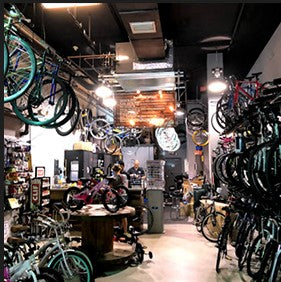Reinventing the Dynamics of Bicycle Security
June 15 2015 – Ezekiel Binns


As new and innovative design alternatives are being fabricated, inconvenient heavy bike locks are becoming fad of the past.
Perhaps the largest concerns of any urban bike commuter are safety and security. Riders utilize convenient LED bike lights and helmets, sometimes even kneepads in order to protect themselves from the harm and neglect they may encounter while riding the city's bustling streets. Amongst arriving at their destination, riders face yet another concern: bicycle security. Cyclist lug around various kinds of bicycle security devices ranging from the 5mm thick steel cables to the 'New York standard' 14mm thick steel chain and lock combination. The problem with these locks expands beyond the fact that even the most secured locks on the market can be disassembled or broken with a few, fairly common tools. Weighing up to 8 pounds, one would think these locks are indestructible. Knowing that the heavier and more expensive locks get, the better they usually perform, most consumers find comfort purchasing locks with higher prices and better quality.
"The way we saw the problem was that there's a limit to the weight cyclists are willing to carry, and that's the limit of bicycle security," says Harking. Daniel Harking, a student at Glasgow School of Art corroborated with product design student, Mason Holden in attempt to find a solution to such a prominent problem of modern day bike culture. The team of two began theorizing the differences in the dynamics of the way we lock our other theft-prone possessions such as cars and homes. They observed that what we carry when we secure our cars and homes is nothing but a mear key. The lock is stationary.
In Mason and Hawking's new design, BikeVault, the lock is in conjunction with the bike rack. Similar to the way public bike sharing stations function, BikeVault allows users to position their bike within the design and receive a card that then slides a large bar through the bike frame and back wheel. Only when the corresponding card is swiped will the bar be unfastened, releasing the bicycle. Both designers, created the BikeVault with the visual aesthetic in mind. Appearing to be more appealing than the traditional public bike parking loops, plays in the underlying sociopsychology of the design. Developers and Urban Planners in the UK are going to implement BikeVaults into their public spaces with confidence. The publicity of the bike racks aids in the discouragement of theft, thieves become more reluctant knowing all eyes are on them.
The designers compare adjusting to the new concept of bike security to the adjustment of cash or plastic during the introduction of the credit card. Most people who had a credit card still carried around cash due to the fact that neither credit cards nor ATM machines were ubiquitous. As the project develops, riders will find themselves less and less reliant on bringing their heavy old locks with them on their city commutes.
in reference to ADELE PETERS : Read More

